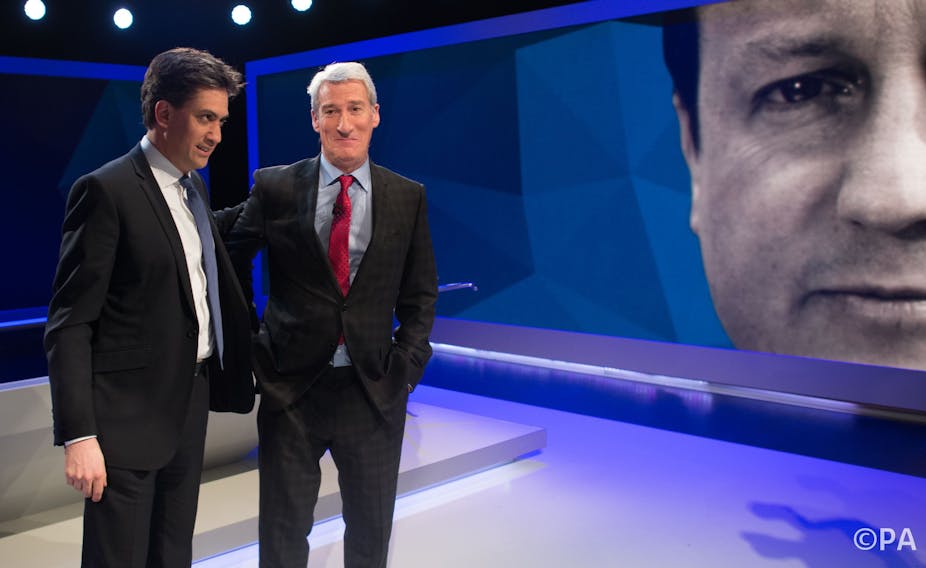There is nothing the public likes more than seeing a politician be verbally torn to pieces on live TV. In the first pre-election leaders’ event, we were all treated to the spectacular tearing apart of the two men who could be our prime minister in a few weeks time.
The response online was very predictable. Those who liked Cameron said he came across well. Those who liked Miliband thought he did a good job. The hashtag accompanying the programme was #BattleForNumber10 which racked up more than 250,000 mentions in just a few hours.
Among the many thousands of tweets, there was commentary by celebrities such as Lord Sugar, Piers Morgan, and Katie Hopkins, most of which was partisan bluster attacking the person they liked the least.
On the topic of unlikeable people, one of the programmes hosts – Kay Burley – received a lot of flack online, most notably for her clear lack of impartiality.
Whether it was the monthly Murdoch cheque that she gets, the show’s producers telling her that she was too soft on Cameron in the first segment, or some other reason, it was clear that Kay was intervening more during Miliband’s segment. This certainly gave the impression of bias on the show. Speaking of bias, the parties’ reaction on Twitter was somewhat lopsided. While there were MPs engaging on both sides, the Labour press team certainly appeared more active.
Battle of the hashtags
While #BattleForNumber10 was by far the most-used hashtag during the programme, there were some other noteworthy ones. The first of these was #notadebate; the primary focus of which to criticise the format of the programme. It’s clear that this segmented Q&A didn’t live up to the proper head-to-head debate that many people wanted. A hashtag predominantly used by Labour supporters and politicians was #runningscared, in which people chided Cameron for being in the same building as Miliband yet refusing to go head-to-head against him.
The other, smaller parties also got in on the Twitter action using the hashtag #TheWiderDebate. The Green Party and the SNP were bemoaning the fact that the programme format gave the impression that it was a two-horse race for No.10, and that many of the issues that they consider important weren’t being discussed.
And the winner is…
In the Battle for Number 10, Jeremy Paxman reminded us why he is one of the best interviewers in the country. Unlike Kay Burley, he was seen as being equally as harsh on Cameron and Miliband alike. Paxman made both men look dangerously fallible, asking cutting questions that held their feet to the fire on both past pledges and future promises. When Paxman broached the topic of David Miliband, the heat almost seemed to much for Ed, and at the end of the interview, Paxman could be heard asking the Labour leader if he was “all right”.
Some on Twitter felt that Paxman was simply being a bully and unnecessarily harsh. I understand that this way of interviewing is not everyone’s cup of tea, but I revel in his combative style. In my opinion, softball interviews are damaging to democracy, and bad media practice. And these days, a tough interview of a politician is a rare thing. As Sunny Hundal aptly summarised:
Initial polling after the programme showed that Cameron slightly performed better Miliband, but judging from the sentiment online, I don’t think many people’s voting preferences changed. Based on the answers we heard, I don’t think we learnt anything new either.
But then again, perhaps that wasn’t the point. After all, we got what we came for: a performance from our prospective prime ministers under pressure from one of the best political interviewers of our time. At the end of the day, the Battle for Number 10 was just a show.

